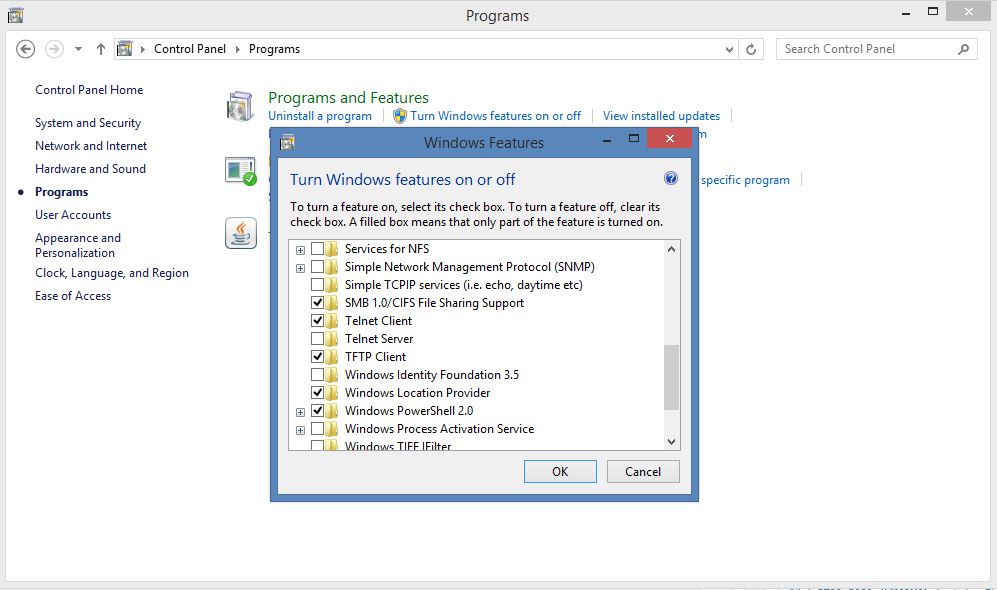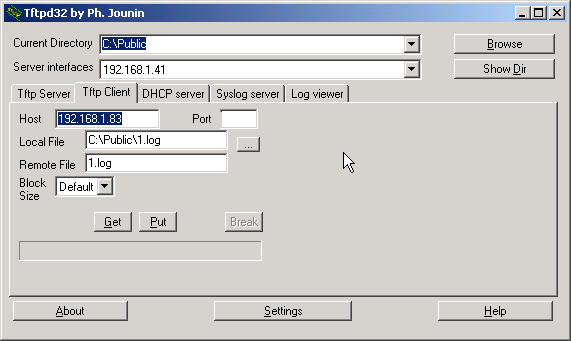

Option PXE.mtftp-cport code 2 = unsigned integer 16 # Code 5: Number of seconds a client must listen before trying to restart # Code 4: Number of seconds a client must listen for activity before trying # Code 3: UDP Port that MTFTP servers are using to listen for MTFTP requests # Code 2: UDP Port that client should monitor for MTFTP Responses # Code 1: Multicast IP Address of bootfile I’m not sure if I am getting the correct DHCP settings (server FOG is using) but below are the settings in /etc/dhcp/nf: # DHCP Server Configuration file\n#see /usr/share/doc/dhcp*/

Jan 5 11:41:18 fogserver in.tftpd: tftp: client does not accept options Jan 5 11:41:18 fogserver dhcpd: reuse_lease: lease age 390 (secs) under 25% threshold, reply with unaltered, existing lease for 192.168.168.17 Jan 5 11:41:15 fogserver dhcpd: DHCPDISCOVER from 0e:20:30:cb:fc:1e via eth1 Jan 5 11:41:15 fogserver dhcpd: reuse_lease: lease age 387 (secs) under 25% threshold, reply with unaltered, existing lease for 192.168.168.17 VM client UEFI (with or w/o secure boot enabled) - not working. 1.5.9 enabled with dhcp (through fog setup) the router runs a TFTP client and you need to host the firmware image on a TFTP server.Fog Server v. The below article mainly advises on the first mode of recovery, i.e. many Netgear routers, run a TFTP server in recovery mode, and you need to upload the firmware to the device using a TFTP client.

#Arch tftp client download
Other devices do not have automatic pull function and they need you to manually TFTP copy commands in recovery mode to download the firmware via TFTP and initiative the install. Some devices then will automatically pull the network-provided firmware file over TFTP network protocol to the OpenWrt and hopefully recover with a successful emergency flash process. Then device with the broken firmware then has to be started up in TFTP recovery mode. There are two potential modes of operation:įor many routers, the recovery process requires you to host the firmware image on a TFTP server on your computer. In case of a failed flash process or in case of a misconfiguration, the device's boot loader usually remains untouched and can therefore be used to reflash the firmware and recover the device. On most devices, the vendor provides a boot loader on a discreet partition that is untouched by firmware updates. If you keep TFTP-Server running or if you keep the TFTP-client tool available to run anytime, then abusive hackers can abuse/exploit it, to load harmful firmware and/or to change sensitive security settings inside your existing router firmware 1, 2, 3, 4, 5, 6, etc. (frwl rule # 3) TFTP traffic is Not-Allowed when originated from Internet-ip-address (aka: NON private- LAN ip-address ranges)Īnd you must also make sure to do this: after your develop / troubleshooting etc work is done or when you pause to goto other work, then make sure the TFTP-server and TFTP-client both are completely disabled in your OS/distro : turn off TFTP-Server service / process, disable TFTP-server startup script file, and move the TFTP-client ( tftp) & the TFTP-server ( tftpd) executable / binary ( bin) files out of all folders mentioned in your PATH variable, into a different folder (which is NOT in the PATH variable), and also move bin files out of the folder which is mentioned in startup-script (if such is used).


 0 kommentar(er)
0 kommentar(er)
